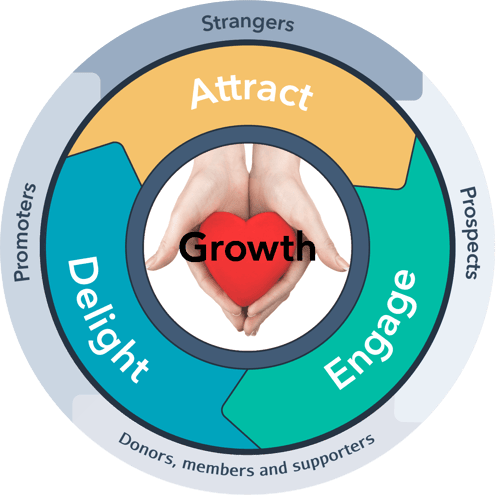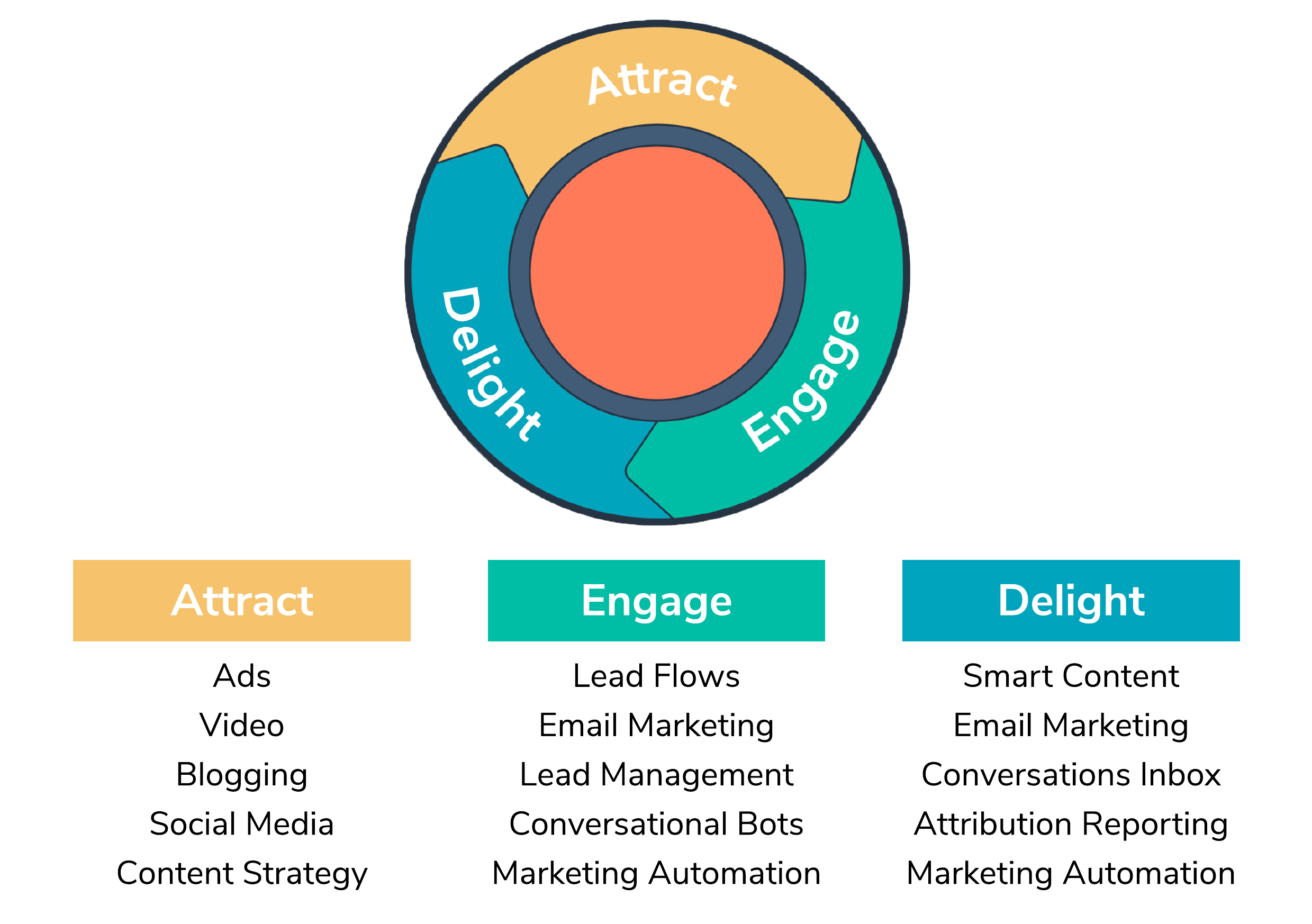Inbound marketing for the non-profit sector attracts prospective donors to your organization by showing them how their support helps the cause and by building a clear picture that explains how their efforts, small or large, make a difference.

The inbound methodology attracts customers by creating valuable content and tailored experiences at every stage of their journey; it achieves this via various 'pull marketing' strategies. Inbound marketing for non-profit organisations focuses on giving current and potential donors a better understanding of how their efforts make a difference and how the organisation uses their donations to help.
Inbound marketing methods help organisations to work with like-minded people with the same interests and goals, making it a much more efficient marketing strategy. Inbound marketing ensures prospective donors are able to view valuable and relevant content online, prompting them to start a conversation and move through the buyer's journey stages (attract, engage, delight). This inbound approach is designed to help your audience make an informed and confident decision and to build a long-term relationship.
Some of the most common and effective content types include:
- Blogging: through blog posts, donors can find answers to their questions and learn more about your cause. Blogs help the organisations provide value and build trust with their target audience while generating content reusable in other marketing efforts.
- Website: being an organisation's central representation online, it must communicate and reinforce the value and mission of your non profit to prospective and current donors.
- Landing Pages: specifically designed to convert visitors into prospects and donors by encouraging them to take action. Landing pages must be designed and optimised to reduce friction, remove distractions and prompt actions.
- Content Offers: provide additional value to your prospects (e.g. monthly reports, progress achieved towards the goal or success stories). Content offers encourage conversion from visitors or prospects into contacts or donors.
- Social Media: having a social media presence and posting regularly is imperative to the inbound methodology for non-profit organisations. Use social media to promote your organisation and interact with your audience.
- Validation Points: methods and materials through which the non-profit organisation can prove its value and build trust with visitors and prospects, such as statistics, donation reports, data or testimonials.

The inbound methodology for non-profit organisations is constructed from the same three stages of the inbound process - attract, engage and delight.
1. Attract
The objective here is to capture the attention of your target audience through inbound marketing methods (such as content tailored to the specific buyer personas). To reach your target audience, start by creating and publishing relevant content that provides value.
Examples of content that non profit organisations could provide:
- A guide or booklet about how to get involved as a volunteer for the charity
- A blog post that highlights medical or social progress for the cause
- Social media posts about upcoming events and how they will help the cause
- Social media posts about success stories of various people supported by the organisation

The content produced should be considered with SEO strategies in mind. This helps the right people find you when searching for topics related to your organisation. Building an SEO strategy requires you to identify and target keywords and phrases related to your industry or cause. An effective SEO strategy will allow an organisation's content and information to appear on search engine pages organically so that potential donars can easily find you.
2. Engage
The objective of this stage is to engage your audience, communicate with donors, answer enquiries and show people how their support helps your cause. It's all about starting build long-term relationships. The conversations at this point should be tailored and personalised to each of your personas, reassuring donors how your organisation supports its cause and instilling confidence in supporters and volunteers. Prospects and donors can engage with various teams during their customer journey, such as:
- Volunteers
- Branch administrators/managers
- Social media account representatives
- Customer support operators (in-person, phone, live chat, email)
Mapping out and analysing the customer journey and synchronising the conversations' goals across teams will ensure prospective donors and supports have the best possible journey with you. The engage stage also captures the prospects and donors' contact details and interests. Your forms must be optimised to accurately and efficiently capture the data you need to be able to personalise communications and report effectively.

3. Delight
Here, you want to ensure that customers are content with the provided services long after becoming donors or supporters of your organisation. The aim is keeping them happy, satisfied and informed on the causes progress and the charity's development. Your teams become advisors and experts who can assist donors, supporters and members at any point on their customer journey. A common and effective delight strategy is using thoughtful, well-timed chatbots and surveys.
Satisfaction surveys can be used to delight- for example, surveys sent following charity runs or surveys for volunteers aiding your organisation can be used to capture feedback and delight current and future customers.
The organisation's blogs, website and social media content also facilitate in delighting customers. They represent channels through which charity success stories featuring people the organisation helped, videos and exciting charity events, can be viewed. Or they can engage in meaningful conversations.

Feedback may also be provided through your social media platforms. People might ask questions that you can respond to, or even better, share their experience with your organisation, allowing potential future donors to read this. Creating advocacy at this stage can be very powerful for gaining new customers and creating good social awareness.
